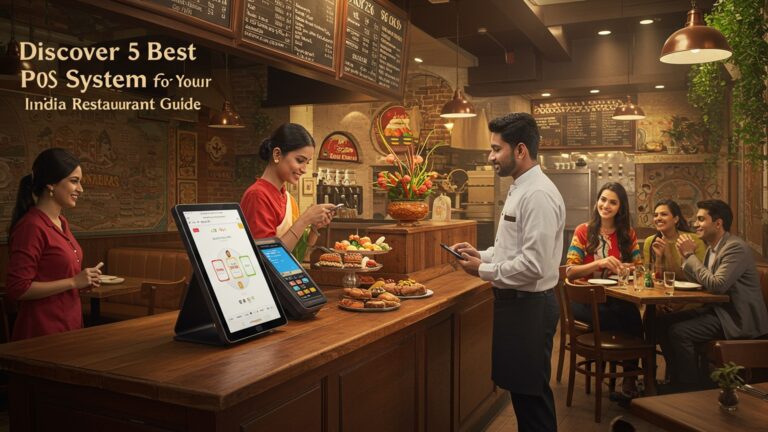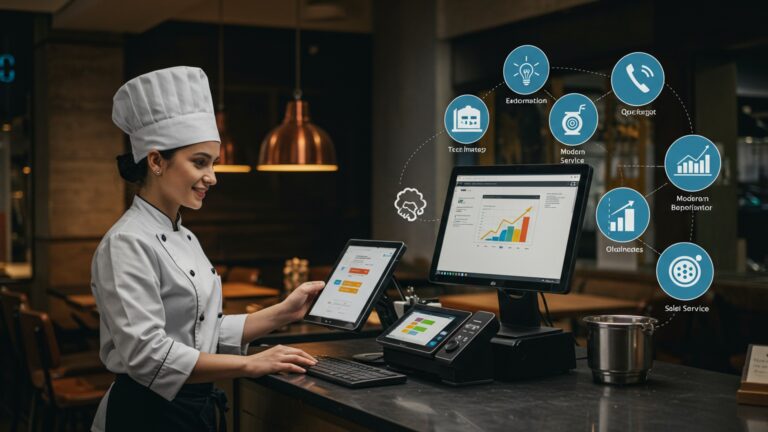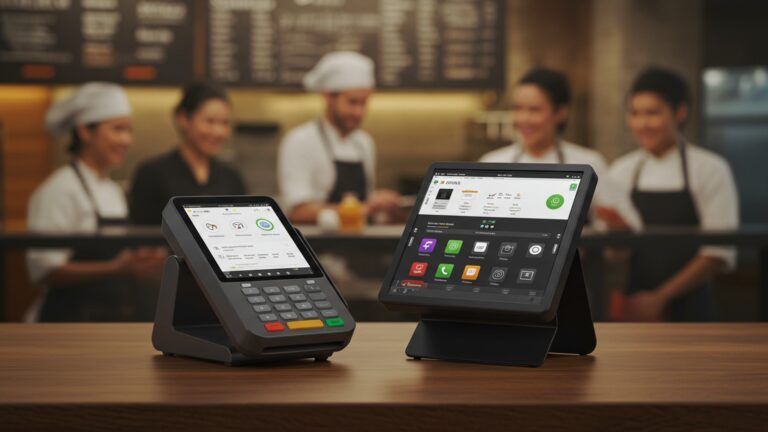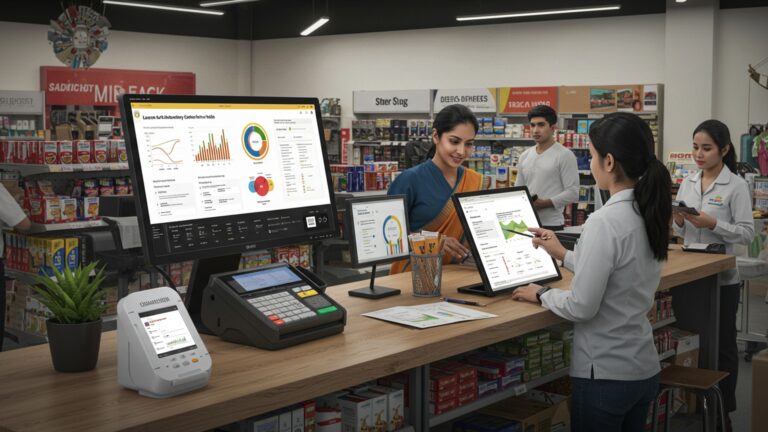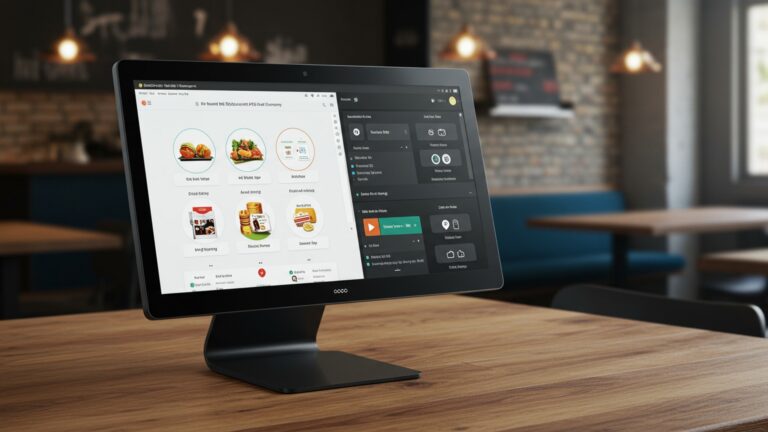How to Choose the Best POS System for Your Small Indian Restaurant
Navigating the bustling ecosystem of a small Indian restaurant, from managing a dynamic menu to juggling orders across Swiggy, Zomato. walk-ins, demands more than traditional billing. The operational crunch, exacerbated by fluctuating ingredient costs and diverse payment methods like UPI, highlights the critical need for robust digital solutions. A modern, cloud-based restaurant POS system for small restaurants India transcends mere transaction processing; it’s a strategic tool. Such systems now offer integrated inventory management for paneer and spices, real-time sales analytics. seamless aggregation of online delivery platforms, providing actionable insights. This technological shift empowers owners to optimize workflows, reduce wastage. enhance customer experience, crucial for sustained growth in today’s fast-paced culinary landscape. 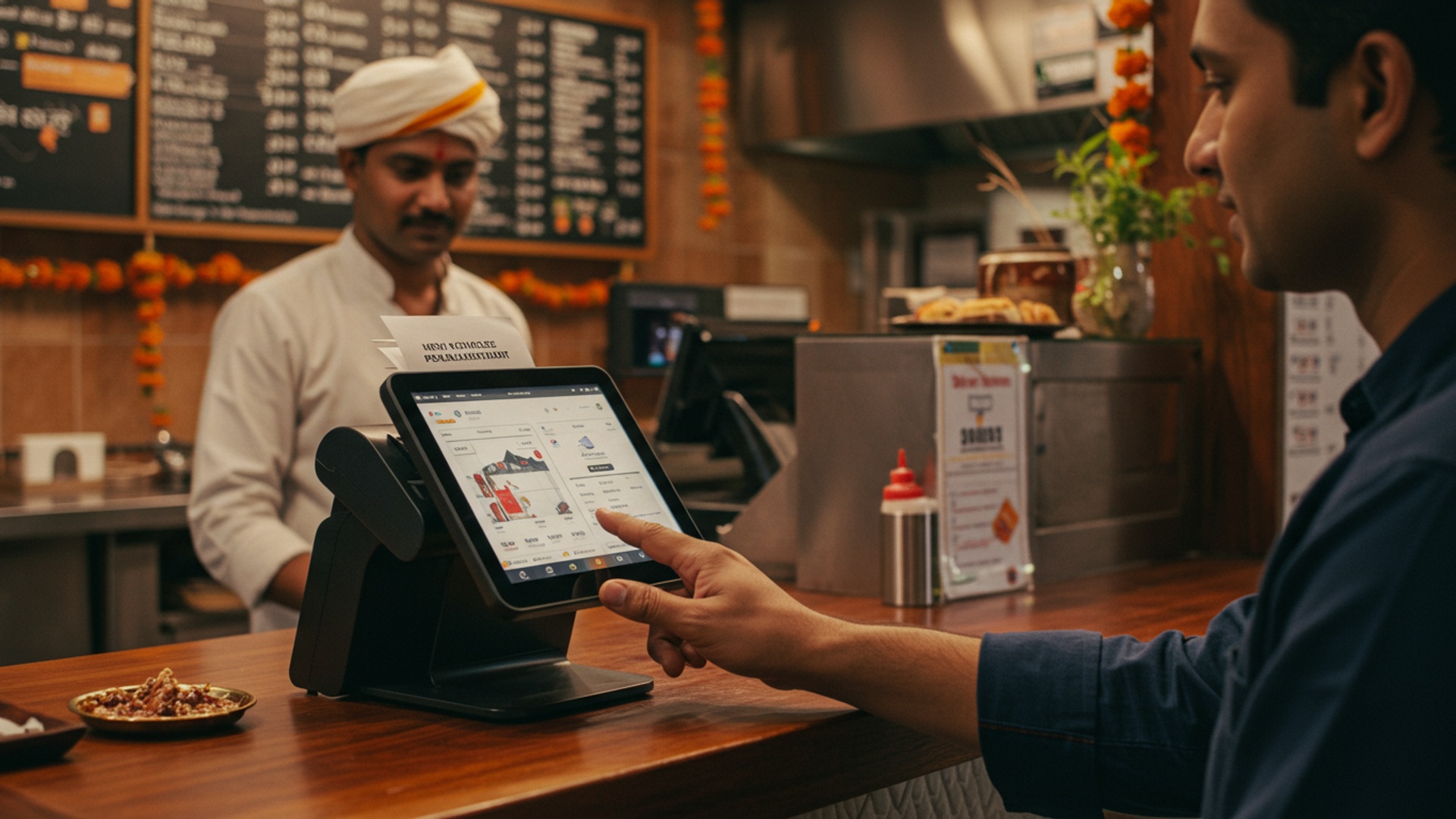
Understanding the Heart of Your Operations: What is a POS System?
In the bustling world of a small Indian restaurant, efficiency is not just a buzzword; it’s the lifeline of your business. At the core of this efficiency lies the Point of Sale (POS) system. But what exactly is a POS system? Imagine it as the central nervous system of your restaurant, managing everything from taking customer orders to processing payments and tracking inventory.
Historically, a POS was a simple cash register. You’d key in prices, collect money. print a basic receipt. Today, the modern POS system has evolved into a sophisticated, integrated software and hardware solution. For a small Indian restaurant, it’s no longer just about transactions; it’s about streamlining operations, enhancing customer experience. providing crucial insights into your business performance. It ties together the front-of-house (where customers interact) with the back-of-house (kitchen, inventory, staff management), creating a seamless workflow.
Key components typically include:
-
- POS Terminal
Often a touchscreen monitor or tablet where orders are entered.
-
- Receipt Printer
For customer receipts and Kitchen Order Tickets (KOTs).
-
- Cash Drawer
For secure cash transactions.
-
- Barcode Scanner
If you sell packaged items or merchandise.
-
- Payment Terminal
For credit/debit card and UPI payments.
-
- Software
The brains of the operation, managing orders, inventory, reports. more.
Why a Dedicated Restaurant POS System is Non-Negotiable for Indian Eateries
While a generic retail POS might seem like a cost-effective solution, it often falls short when confronted with the unique demands of an Indian restaurant. Indian cuisine, with its vast array of dishes, complex preparations. specific service styles, requires a POS system built to handle these intricacies. This is where a specialized Restaurant POS system for small restaurants India truly shines.
Consider the typical challenges:
-
- Diverse and Customizable Menus
Indian menus often include thalis (combo meals), curries with multiple bread options, customizable spice levels. extensive beverage lists. A generic system struggles with these variations.
-
- Peak Hour Rush
Lunch and dinner rushes in Indian restaurants can be intense. A dedicated system allows for quick order entry, table management. efficient KOT generation to prevent kitchen bottlenecks.
-
- Online Order Integration
With the rise of Swiggy, Zomato. direct online orders, seamless integration is crucial to avoid manual data entry and errors.
-
- Inventory Management for Perishables
Tracking ingredients like fresh vegetables, spices. dairy products, which are central to Indian cooking, requires specific inventory features to minimize waste.
A restaurant-specific POS system addresses these challenges directly. For example, my friend, who runs a small South Indian tiffin center, initially used a basic retail POS. He struggled immensely with managing his dosa and idli customisations, the rapid turnover of tables during breakfast. manually entering online orders. Switching to a dedicated restaurant POS immediately reduced errors, sped up service. allowed his staff to focus more on customers and less on administrative tasks.
Key Features to Look For in a Restaurant POS System for Small Restaurants India
When evaluating a Restaurant POS system for small restaurants India, certain features become paramount for success. Look beyond the basics and identify functionalities that directly impact your specific operational needs.
-
- Menu Management
- Detailed Item Customization
- Menu Management
Ability to add modifiers (e. g. , “extra spicy,” “less oil,” “no onion”), combo meals (thalis, platters). multiple variants (e. g. , butter naan, garlic naan).
-
-
- Category Organization
-
Easy grouping of items (starters, main course, desserts, beverages) for quick order entry and reporting.
-
-
- Pricing Flexibility
-
Support for different pricing tiers (dine-in, takeaway, delivery) and discount management.
-
- Order Management
- Table Management
- Order Management
Visual floor plan, table status (occupied, vacant, cleaning), ability to split/merge tables and bills.
-
-
- Kitchen Order Ticket (KOT) System
-
Automatically sends orders to the kitchen/bar, reduces errors. improves communication. Many systems offer KDS (Kitchen Display System) for a paperless kitchen.
-
-
- Online Order Integration
-
Direct integration with popular food aggregators like Swiggy and Zomato, as well as your own website’s online ordering portal.
-
-
- Takeaway & Delivery Management
-
Specific workflows for tracking delivery orders, assigning delivery personnel. managing delivery charges.
-
- Inventory Management
- Ingredient Tracking
- Inventory Management
Real-time tracking of raw ingredients consumed per dish, crucial for Indian recipes.
-
-
- Stock Alerts
-
Automated notifications for low stock levels.
-
-
- Vendor Management
-
Track supplier data, purchase orders. receiving.
-
-
- Waste Management
-
Tools to record and review spoilage or waste.
-
- Customer Relationship Management (CRM)
- Loyalty Programs
- Customer Relationship Management (CRM)
Create and manage points-based systems, discounts, or special offers for repeat customers.
-
-
- Customer Database
-
Store customer contact details, order history. preferences.
-
-
- Feedback Mechanism
-
Integrated tools for collecting customer feedback.
-
- Reporting & Analytics
- Sales Reports
- Reporting & Analytics
Daily, weekly, monthly sales, best-selling items, peak hours.
-
-
- Cost Analysis
-
Track food costs, labor costs. profitability.
-
-
- Staff Performance
-
Monitor individual staff sales and efficiency.
-
-
- Customizable Reports
-
The ability to generate reports tailored to your specific needs.
-
- Staff Management
- Role-Based Access
- Staff Management
Restrict access to certain functions based on staff roles (e. g. , cashier, manager).
-
-
- Time & Attendance
-
Track staff clock-in/out times.
-
-
- Tip Management
-
Tools to manage and distribute staff tips.
-
- Integration Capabilities
- Payment Gateways
- Integration Capabilities
Seamless integration with local payment providers for credit cards, debit cards, UPI. digital wallets.
-
-
- Accounting Software
-
Syncs with popular accounting platforms like Tally or QuickBooks to simplify bookkeeping.
-
- Offline Mode
Essential in India where internet connectivity can be unpredictable. The system should function seamlessly offline and sync data once connectivity is restored.
-
- Multi-Language Support
While not always critical, support for Hindi or regional Indian languages can be a significant advantage for your staff.
Hardware Considerations: Building Your Restaurant’s Tech Backbone
The software is the brain. the hardware is the body of your POS system. Choosing the right hardware for your Restaurant POS system for small restaurants India ensures smooth operations and durability in a busy environment.
-
- POS Terminal
- Touchscreen Monitors
- POS Terminal
Most popular for ease of use, speed. reduced training time. Look for industrial-grade screens that can withstand spills and heavy use.
-
-
- Tablets (iPad/Android)
-
Excellent for mobility, allowing staff to take orders tableside, speeding up service and improving accuracy. They can also serve as primary terminals for very small setups.
-
-
- Traditional Terminals
-
Less common now. still viable for budget-conscious operations, though they lack the intuitive nature of touchscreens.
-
- Receipt Printer
- Thermal Printers
- Receipt Printer
Fast, quiet. use heat to print, meaning no ink cartridges. Ideal for customer receipts.
-
-
- Dot Matrix Printers
-
Slower and noisier but useful for KOTs as they can print multiple copies and are less sensitive to heat/grease in the kitchen environment.
-
-
- Kitchen Display System (KDS)
-
A digital screen that displays orders directly in the kitchen, eliminating paper KOTs, reducing errors. improving communication.
-
- Cash Drawer
A sturdy, secure cash drawer that integrates with your POS system, opening automatically upon a cash transaction.
-
- Barcode Scanner
If your restaurant sells packaged beverages, snacks, or merchandise, a quick and accurate barcode scanner is essential.
-
- Customer Display Screen
A small screen facing the customer that shows their order items and total. This increases transparency and reduces billing disputes.
-
- Handheld Devices/Tablets for Order Taking
For restaurants with table service, these devices empower waiters to take orders directly at the table, send them to the kitchen instantly. even process payments, significantly enhancing efficiency and customer experience.
Software Deployment: Cloud-Based vs. On-Premise for Indian Restaurants
One of the most significant decisions you’ll make when choosing a Restaurant POS system for small restaurants India is whether to opt for a cloud-based or on-premise solution. Each has distinct advantages and disadvantages, particularly relevant in the Indian context.
Cloud-Based POS
- Definition
Also known as Software-as-a-Service (SaaS), cloud-based POS systems store your data on remote servers managed by the vendor. You access the software via the internet through a web browser or an app.
-
- Pros
- Lower Upfront Cost
Typically involves a monthly or annual subscription fee, avoiding large initial hardware investments for the server.
-
- Remote Access
Manage your restaurant from anywhere with an internet connection – check sales, inventory. reports from home or during a vacation.
-
- Automatic Updates & Maintenance
The vendor handles all software updates, security patches. server maintenance, reducing your IT burden.
-
- Scalability
Easily add more terminals or locations as your business grows, often with simple subscription adjustments.
-
- Data Security & Backup
Reputable vendors offer robust data encryption and regular backups, often more secure than what a small business can manage independently.
-
- Cons
- Internet Dependency
While most modern cloud POS systems offer an “offline mode” that allows transactions to be recorded and synced later, a stable internet connection is vital for full functionality and real-time updates.
-
- Subscription Fees
Ongoing costs can accumulate over time.
-
- Data Control
Your data is stored on a third-party server, which might be a concern for some businesses regarding data ownership and privacy.
- Real-world Application
Consider Maya, who owns a trendy cafe in Bengaluru. She travels frequently but needs to keep an eye on her daily sales and inventory. A cloud-based POS allows her to log in from anywhere, monitor her business. even push menu updates remotely. The offline mode ensures her operations continue even during occasional internet outages.
On-Premise POS
- Definition
With an on-premise (or legacy) POS system, the software is installed directly on your restaurant’s hardware (e. g. , a local server or computer). You own the software license.
-
- Pros
- Full Control
You have complete control over your data and system.
-
- No Internet Dependency (for core operations)
Once installed, the system can function without an internet connection, making it ideal for areas with unreliable connectivity.
-
- One-Time License Fee
After the initial purchase, there are no recurring software subscription fees (though support and updates might cost extra).
-
- Customization
Often allows for deeper customization to fit very specific, niche requirements.
-
- Cons
- Higher Upfront Cost
Requires a significant initial investment for software licenses, server hardware. installation.
-
- Maintenance Responsibility
You are responsible for all IT maintenance, software updates, data backups. security, which can be time-consuming and require technical expertise.
-
- Limited Remote Access
Accessing your business data remotely is often more complex or requires additional setup.
-
- Scalability Challenges
Expanding to multiple locations or adding more terminals can be more complex and costly.
- Real-world Application
Imagine a traditional dhaba owner, Rajesh, in a tier-3 city where internet connectivity is sporadic at best. An on-premise POS ensures that his daily operations – order taking, billing. KOT generation – are never interrupted by internet fluctuations. He prefers the one-time cost and doesn’t need remote access as he’s always on-site.
Here’s a quick comparison:
| Feature | Cloud-Based POS | On-Premise POS |
|---|---|---|
| Initial Cost | Lower (subscription) | Higher (license + hardware) |
| Ongoing Costs | Subscription fees | Maintenance, updates (optional) |
| Internet Dependency | High (but often with offline mode) | Low (for core functions) |
| Remote Access | Easy, built-in | Limited, requires additional setup |
| Maintenance | Vendor handles | Your responsibility |
| Scalability | Easy | More complex, costly |
| Data Control | Managed by vendor | Full control by owner |
Budgeting for Your Restaurant POS System for Small Restaurants India
Investing in a Restaurant POS system for small restaurants India is a strategic decision that impacts your finances. It’s crucial to grasp all associated costs to avoid surprises and ensure a healthy return on investment (ROI).
-
- Initial Setup Costs
- Hardware
- Initial Setup Costs
This includes POS terminals, receipt printers, cash drawers, payment terminals. potentially kitchen display systems or handheld devices. Prices vary widely based on quality and brand.
-
-
- Software License/Subscription
-
For on-premise systems, it’s a one-time license fee. For cloud-based, it’s typically a monthly or annual subscription per terminal or location.
-
-
- Installation & Setup
-
Some vendors charge for initial installation, configuration of your menu. data migration.
-
-
- Training
-
While some vendors include basic training, extensive staff training might incur additional costs.
-
- Ongoing Costs
- Software Subscription (Cloud-based)
- Ongoing Costs
Your primary recurring expense.
-
-
- Support & Maintenance
-
For on-premise systems, you might pay an annual fee for software updates and technical support. For cloud systems, this is usually bundled.
-
-
- Consumables
-
Thermal paper rolls for printers, ink cartridges (if using dot matrix).
-
-
- Payment Processing Fees
-
Transaction fees charged by payment gateway providers.
-
- Return on Investment (ROI)
Don’t view a POS system as just an expense; it’s an investment. A good POS can yield significant ROI through:
-
-
- Reduced Errors
-
Less manual entry means fewer billing mistakes and wasted food.
-
-
- Increased Efficiency
-
Faster order processing, table turnover. staff productivity.
-
-
- Better Inventory Control
-
Minimizing food waste, preventing theft. optimizing purchasing.
-
-
- Data-Driven Decisions
-
Reports help you identify best-selling items, slow periods. opportunities for growth.
-
-
- Enhanced Customer Experience
-
Faster service, accurate orders. loyalty programs lead to repeat business.
-
- Consider Free/Freemium Options
Some basic POS systems offer free tiers. While they might seem attractive for a tiny start-up, they often come with limited features, poor support. may not scale. Be cautious and comprehend the limitations before committing. For a small Indian restaurant with a dynamic menu and operations, a robust paid solution usually offers better long-term value.
Implementation and Training: Making the Transition Smooth
Even the best Restaurant POS system for small restaurants India won’t deliver its full potential if it’s not implemented correctly and if your staff aren’t adequately trained. A smooth transition is crucial to avoid operational disruptions.
-
- Data Migration
- Menu Setup
- Data Migration
This is arguably the most time-consuming part. All your dishes, ingredients, modifiers, prices. categories need to be accurately entered into the new system. Work closely with your vendor or assign a dedicated staff member.
-
-
- Customer Data
-
If you have an existing customer database (e. g. , for loyalty programs), ensure it can be imported into the new POS.
-
-
- Inventory Data
-
Inputting initial stock levels and supplier details is vital for effective inventory management.
-
- Staff Training
This is non-negotiable. Your staff are the primary users. their proficiency directly impacts your restaurant’s efficiency and customer service.
-
-
- Phased Training
-
Start with managers and key staff, then train the rest of the team.
-
-
- Hands-on Practice
-
Provide ample opportunities for staff to practice taking orders, processing payments. managing tables on the new system before going live. Role-playing scenarios are very effective.
-
-
- Focus on Workflow
-
Train them not just on how to press buttons. how the POS integrates into their daily workflow – from greeting a customer to closing a table.
-
-
- Refresher Sessions
-
Schedule follow-up training sessions after the system has been live for a few weeks to address common issues and reinforce learning.
-
- Vendor Support
- Pre-Go-Live Support
- Vendor Support
Ensure the vendor is available for questions and troubleshooting during the setup and training phases.
-
-
- Go-Live Support
-
Ideally, have a vendor representative or dedicated support line available on the day you switch to the new system to quickly resolve any immediate issues.
-
-
- Post-Implementation Support
-
comprehend the vendor’s ongoing support structure – 24/7, phone, email, chat, onsite visits. response times. Local support is highly beneficial for Indian restaurants due to time zone differences and language.
Making the Final Decision: A Checklist for Small Indian Restaurants
Choosing the right Restaurant POS system for small restaurants India is a significant commitment. Before you sign on the dotted line, run through this comprehensive checklist to ensure you’re making the best decision for your business.
- Compatibility & Integration
- Does it seamlessly integrate with your existing online food aggregators (Swiggy, Zomato)?
- Can it connect with your preferred payment gateways (Paytm, Google Pay, UPI, credit/debit card machines)?
- Is it compatible with your accounting software (e. g. , Tally, Zoho Books)?
- Can it integrate with any existing loyalty programs or CRM tools you use?
- Scalability
- Can the system easily accommodate more terminals or handheld devices as your business grows?
- If you plan to open multiple branches, can the POS system manage multiple locations centrally?
- Support & Service
- Does the vendor offer 24/7 customer support? What are their response times?
- Is local support available in India, preferably in your region, to assist with specific issues or language barriers?
- What is the quality of their online resources (knowledge base, tutorials)?
- Are there clear service level agreements (SLAs) for uptime and issue resolution?
- Security & Compliance
- How does the system protect sensitive customer and business data?
- Is it PCI DSS compliant for handling card payments?
- Does it offer role-based access control to prevent unauthorized access by staff?
- What are the backup and disaster recovery protocols for your data?
- User-Friendliness
- Is the interface intuitive and easy for your staff to learn and use, even with minimal tech experience?
- Can new menu items or price changes be made quickly and easily?
- Does it cater to the specific complexities of an Indian restaurant menu?
- Reviews & Testimonials
- What do other small Indian restaurant owners say about this specific POS system? Look for reviews on independent platforms.
- Can the vendor provide references from similar restaurants in your area or cuisine type?
- Total Cost of Ownership (TCO)
- Beyond the initial price, consider all ongoing costs (subscriptions, support, consumables) over a 3-5 year period.
- Does the vendor offer flexible payment plans or packages that suit your budget?
- Demo and Trial
- Always request a live demonstration tailored to your restaurant’s needs.
- If possible, ask for a free trial period to test the system in your actual operational environment.
Conclusion
Choosing the right POS system for your small Indian restaurant isn’t merely a purchase; it’s a strategic investment in efficiency and customer delight. Remember to prioritize features that directly address your unique operational challenges, like managing a diverse menu from dosas to biryanis, ensuring seamless KOT generation for both the main kitchen and your dedicated tandoor section. integrating with popular delivery platforms like Swiggy or Zomato, a crucial trend post-pandemic. From my own observations, a system that simplifies staff training and manages inventory for those crucial Indian spices truly makes a difference. Before committing, always leverage free trials. This hands-on experience, testing peak-hour scenarios and everyday order flows, is invaluable. Look for local support too; having someone comprehend the nuances of the Indian market can be a lifesaver. Your ideal POS will not only streamline billing but also empower you to grow, turning every customer interaction into a memorable dining experience. Embrace this choice confidently, knowing it’s a stepping stone to greater success.
More Articles
Discover 7 Essential Android POS Features for Indian Restaurants
How to Choose the Best Restaurant POS System for Seamless Operations
Learn How to Select the Best POS Software in India for Success
7 Essential Tips for Finding Affordable POS Software Price in India
Learn 7 Best POS Software Solutions for Cloud Kitchens India
FAQs
Why does my small Indian restaurant even need a POS system?
Even for a small place, a good POS streamlines orders, manages billing, tracks sales. helps with inventory. It means faster service, fewer mistakes. clearer insights into what’s selling, ultimately making your life easier and your customers happier. It’s an investment in efficiency.
What are the essential features an Indian restaurant POS absolutely must have?
Look for features like table management, KOT (Kitchen Order Ticket) generation, split billing, online order integration (crucial for the Indian market), detailed sales reporting. basic inventory tracking for ingredients. Support for multiple payment types, including UPI, is also a big plus.
Cloud-based or traditional ‘on-premise’ system – which one is better for a small Indian eatery?
For most small Indian restaurants, cloud-based POS is usually the better choice. It’s often more affordable upfront, easier to set up, accessible from anywhere. updates automatically. You won’t need expensive servers on-site. your data is securely backed up remotely, which is a huge relief.
How much should a small Indian restaurant budget for a new POS system?
Costs vary a lot depending on features and vendor. You might find basic systems starting from a few thousand rupees per month for a subscription, plus hardware costs (like a tablet or printer). More advanced systems with extensive features could go higher. Focus on value for money and ensure it fits your specific needs without breaking the bank.
Can these systems integrate with popular Indian food delivery platforms like Zomato or Swiggy?
Absolutely. it’s a critical feature! Many modern POS systems designed for the Indian market offer direct integration with major food delivery apps. This means orders from those platforms flow directly into your POS, reducing manual entry errors and speeding up order processing, saving you a lot of hassle.
Will it be hard to train my staff on a new POS system?
Not necessarily. Good POS systems are designed to be user-friendly with intuitive interfaces. Look for one that offers good training resources or local support. A simple, well-designed system can be picked up quickly by staff, even those not very tech-savvy, after a little practice.
What kind of customer support should I expect from a POS vendor?
Strong, local customer support is key, especially given restaurant operating hours. Look for vendors who offer 24/7 support (or at least extended hours that cover your peak times), multiple contact methods (phone, chat, email). quick resolution times. Check reviews to see how responsive and helpful they are with issues.

